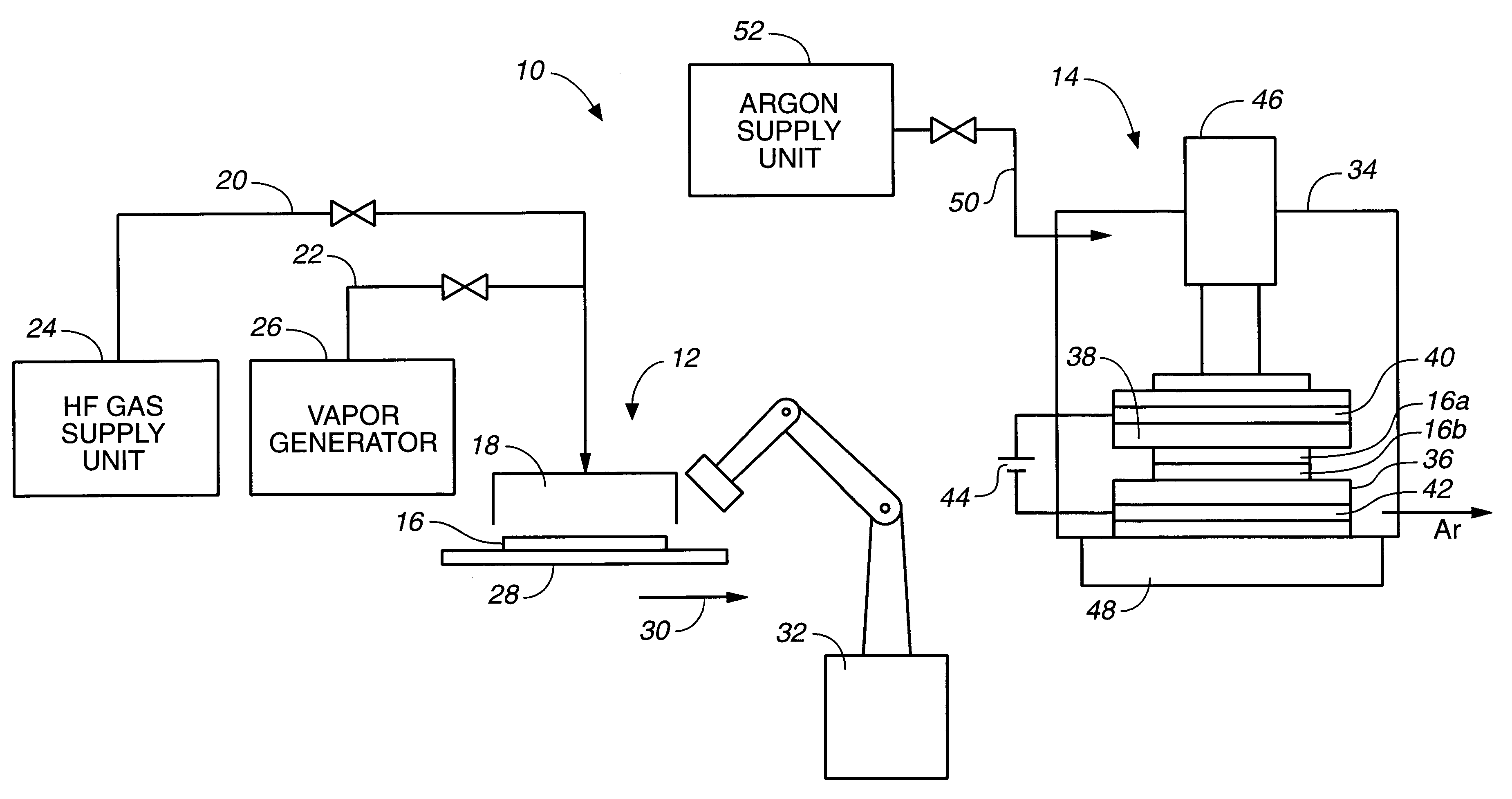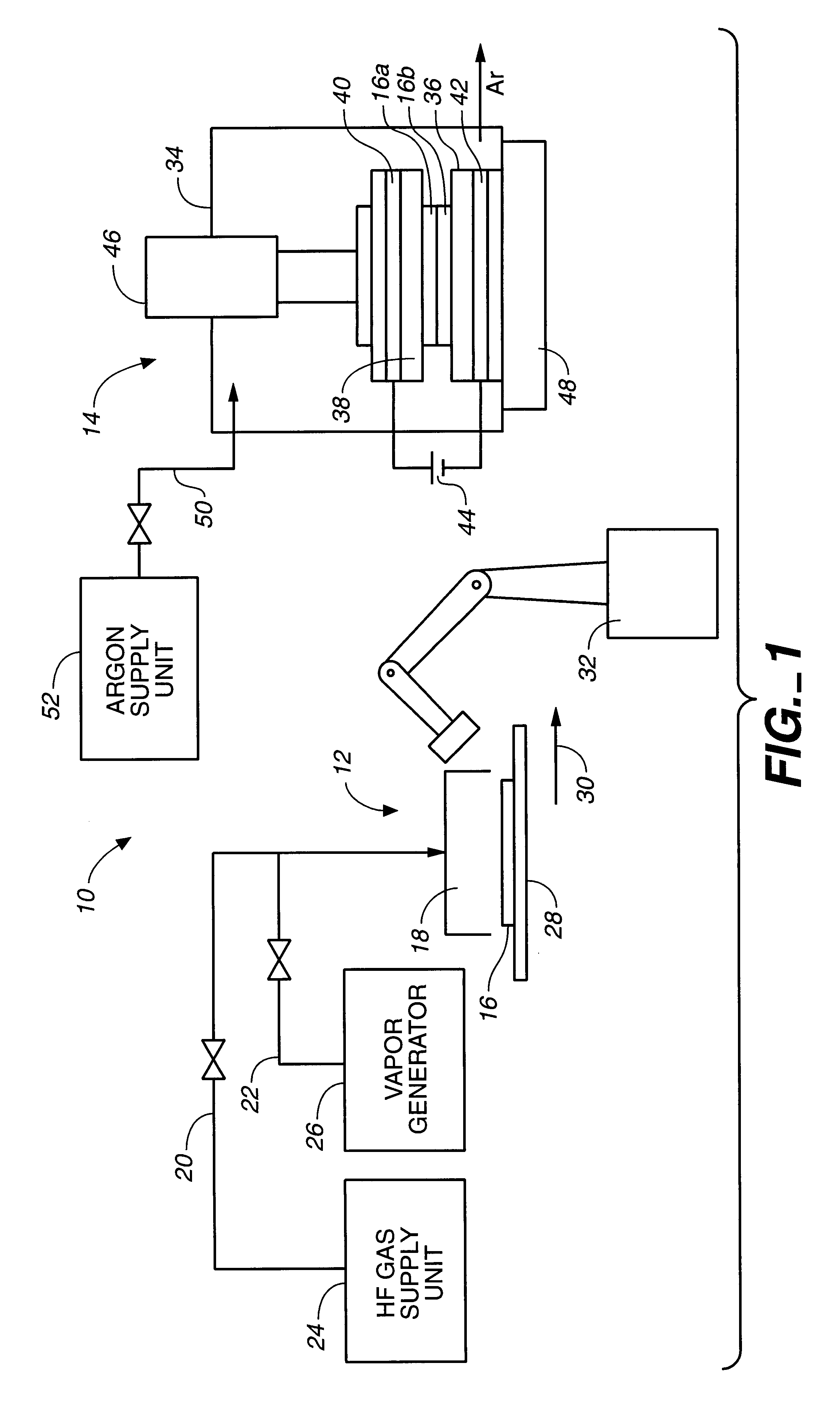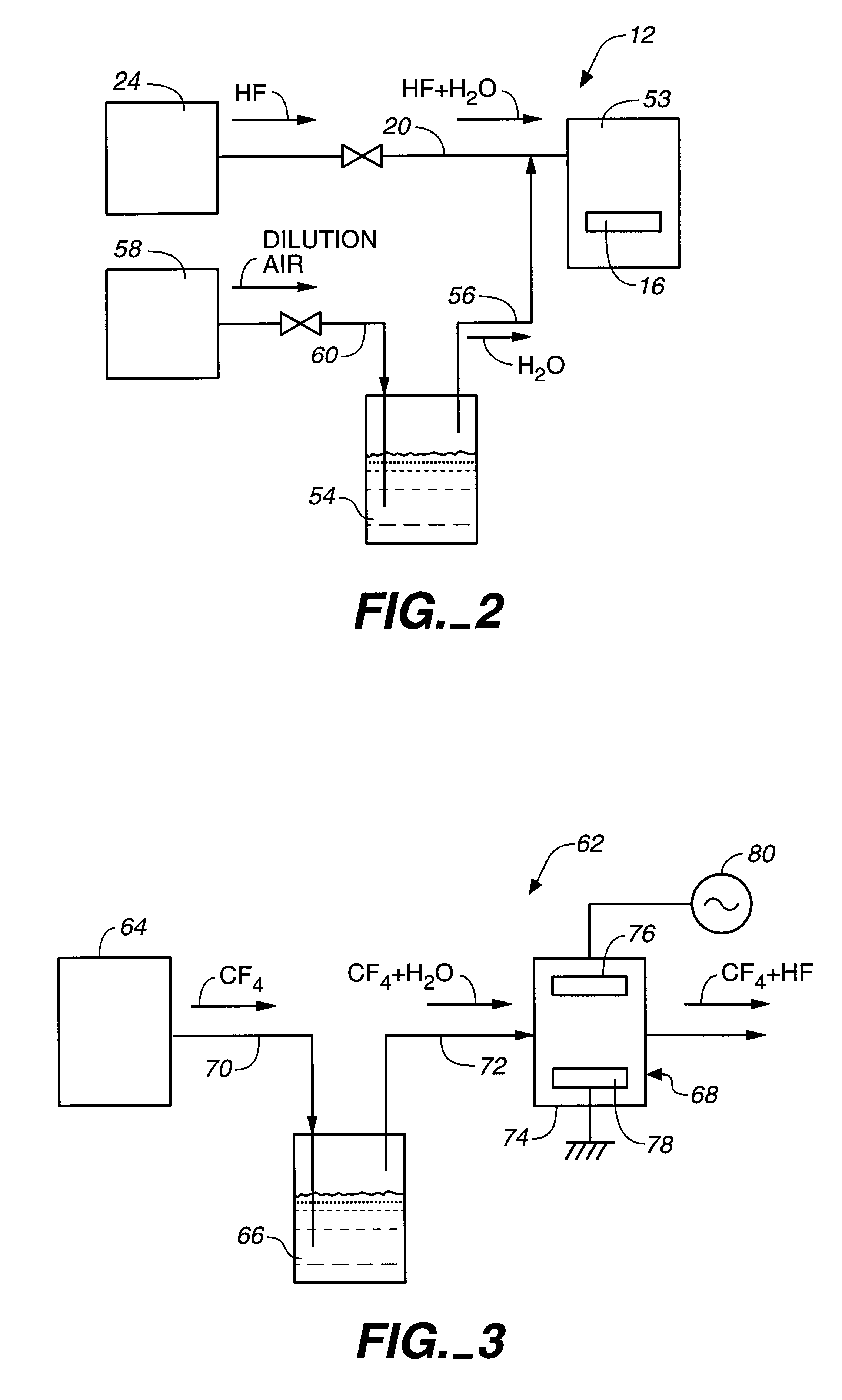Method and apparatus for solid bonding, a conductor bonding method, a packaging method, and a bonding agent and a method for manufacturing a bonding agent
a conductor bonding and solid bonding technology, applied in the direction of soldering apparatus, manufacturing tools, adhesive processes with surface pretreatment, etc., can solve the problems of inconsistencies, difficult control of the final shape of the bonded article during the bonding process, and easy disturbance of the bonding member alignment, etc., to achieve stable finished shape, simple bonding process, and good appearance
- Summary
- Abstract
- Description
- Claims
- Application Information
AI Technical Summary
Benefits of technology
Problems solved by technology
Method used
Image
Examples
first working example
1. First Working Example
In this first working example the bond members are 60-40 solder (60% tin, 40% lead) in sheet form, and a copper sheet 5 mm wide, 20 mm long, and 0.2 mm thick. The surface of the solder was fluorinated using the fluorination process section 12 shown in FIG. 2.
Fluorination of the solder sheet was accomplished by placing the solder in fluorination chamber 53 at room temperature, introducing HF to fluorination chamber 53 to a 1% concentration with 20% relative humidity (RH), and leaving the solder exposed to this environment for 1 minute. The fluorinated solder was then left exposed to air for approximately 1 hour. The fluorinated solder and copper sheet were then placed together, and exposed to heat and pressurize as described above. The effects of heat and pressure on bond strength were then investigated. The results of this investigation are shown in FIG. 11.
Referring to FIG. 11, bonding pressure is shown on the x-axis (in kgf / mm.sup.2), the temperature to whi...
second working example
2. Second Working Example
In this second working example, fluorinated 60-40 solder and an untreated copper sheet identical to those used in the first working example above were stacked in air, and the relationship of bond strength to bonding temperature and bonding time was investigated. The results are shown in FIG. 12.
Bonding time (in minutes) is shown on the axis of abscissas in FIG. 12, and the shear strength of the bond (in kgf) is shown on the axis of ordinates. The temperature and pressure shown in FIG. 12 represent bonding temperature and bonding pressure, respectively.
As will be known from FIG. 12, bond strength (shear strength) generally improves as the bonding time increases.
It should be noted that fluorinated solder and an untreated copper sheet were also stacked in air at 25.degree. C. with a bonding pressure of 2.00 kgf / mm.sup.2 applied for 90 minutes to attempt bonding without applying heat. The bond strength, that is, shear strength, however was 0, and the fluorinated...
third working example
3. Third Working Example
The effect of atmosphere on bond strength was investigated in this third working example, and the results are shown in FIG. 13.
In this third working example, fluorinated 60-40 solder and an untreated copper sheet identical to those used in the first working example above were used, heated to and held at 150.degree. C., and then combined and bonded in air and in an inert nitrogen atmosphere. Bonding time was 5 minutes in both cases.
At a natural gravity bonding pressure of 0.05 kgf / mm.sup.2, the bond in air had a shear strength (bond strength) of approximately 1 kgf. In nitrogen, however, shear strength was approximately 2 kgf, or twice the bond strength achieved in air.
However, when the bonding pressure was 1 kgf / mm.sup.2, the bond in air had a shear strength slightly greater than that achieved in nitrogen.
PUM
| Property | Measurement | Unit |
|---|---|---|
| temperature | aaaaa | aaaaa |
| thick | aaaaa | aaaaa |
| pressure | aaaaa | aaaaa |
Abstract
Description
Claims
Application Information
 Login to View More
Login to View More - R&D
- Intellectual Property
- Life Sciences
- Materials
- Tech Scout
- Unparalleled Data Quality
- Higher Quality Content
- 60% Fewer Hallucinations
Browse by: Latest US Patents, China's latest patents, Technical Efficacy Thesaurus, Application Domain, Technology Topic, Popular Technical Reports.
© 2025 PatSnap. All rights reserved.Legal|Privacy policy|Modern Slavery Act Transparency Statement|Sitemap|About US| Contact US: help@patsnap.com



